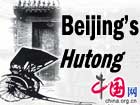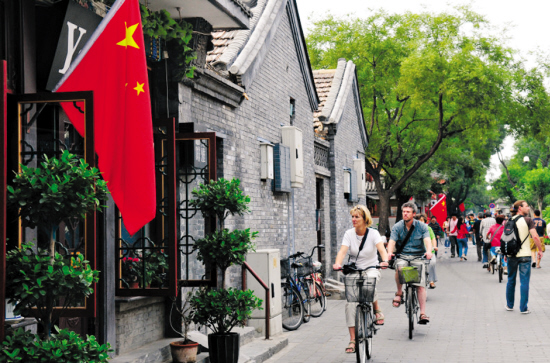| Videos | • Latest |
|
• Feature | • Sports | • Your Videos |
Hutong -- a symbol of Beijing's history

As Beijing races to modernize and expand, much of the traditional beauty and charm fades slowly as bulldozers demolish historic neighborhoods and the mega-tropolis emerges. But aspects of the city's ancient history survive and offer a window into the past.
Beijing's hutong, an alley linking homes among courtyards, is one of its most distinctive features. The capital city remains home to thousands of hutongs, many of which were built in the area surrounding the Forbidden City during the Yuan (1279-1368), Ming (1368-1644) and Qing (1644 -1911) dynasties.
The hutong gives a glimpse into Beijing's past and reflects the dramatic changes the rest of Beijing has undergone. In contrast with court life and elite culture represented by the Forbidden City, Summer Palace, and the Temple of Heaven, it reflects the culture of the common people.
In Beijing of old, the Forbidden City was the center, surrounded in concentric circles by the Inner City and Outer City. Citizens of higher social status were permitted to live closer to the center of the circles.
The aristocratic hutongs of those times were located just to the east and west of the imperial palace. The lanes were orderly, lined by spacious homes and walled gardens. Further from the palace and to its north and south were the commoners' hutongs, where merchants, artisans and laborers lived and worked.
The residences lining the hutongs, whether grand or humble, were generally siheyuans, complexes formed by four buildings surrounding a courtyard. The large siheyuans of high-ranking officials and wealthy merchants often featured beautifully carved and painted roof beams along with pillars and carefully landscaped gardens. Commoners' siheyuans were less extravagant.
The hutongs are, in fact, passageways formed by many siheyuans of varying sizes, all arranged closely together. Nearly all siheyuans had their main buildings and gates facing south for better lighting; so the majority of hutongs run from east to west. Between the main hutongs, many tiny lanes ran north and south for convenient passage.
In the past decades, hutongs have been disappearing, replaced by the high-rise apartment buildings and wide boulevards of today's Beijing. Many citizens have chosen to leave hutongs where their families resided for generations.
In Xicheng District alone, nearly 200 hutongs out of the 820 it held in 1949 have disappeared. The Beijing Municipal Construction Committee reported 250,000 square meters of old housing – 20,000 households – demolished in 2004.
However, a number of Beijing's ancient hutongs have been designated protected areas. These types of measures should preserve the hutong for future generations.
 0
0 









Go to Forum >>0 Comments